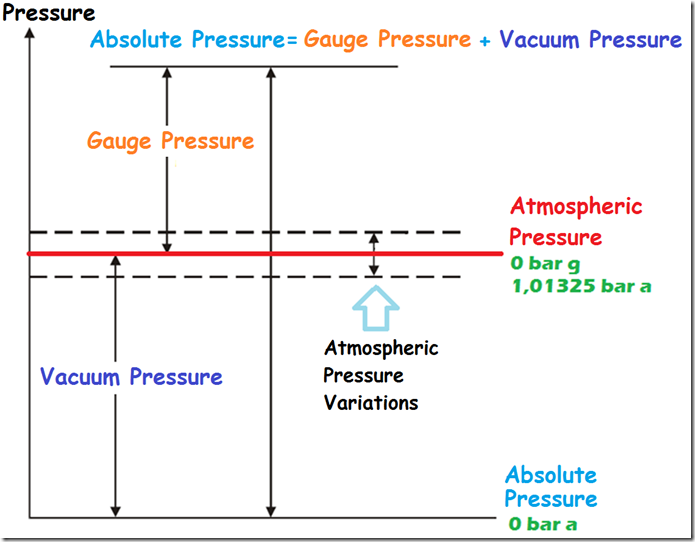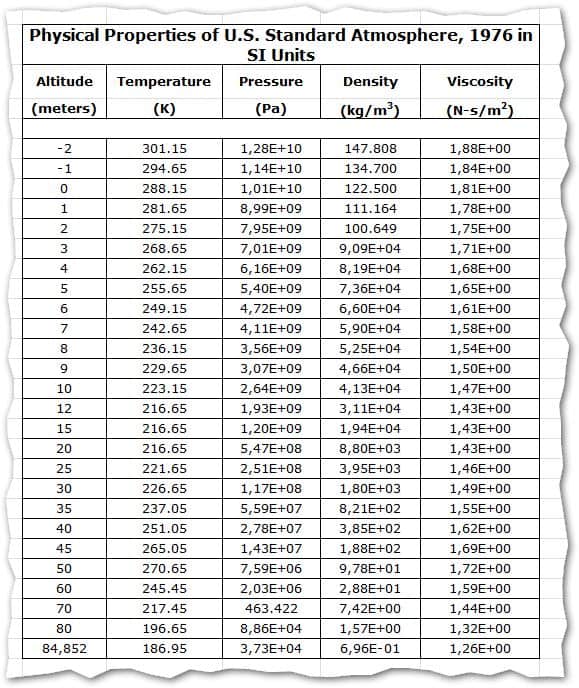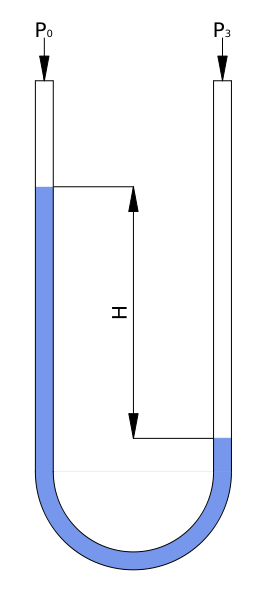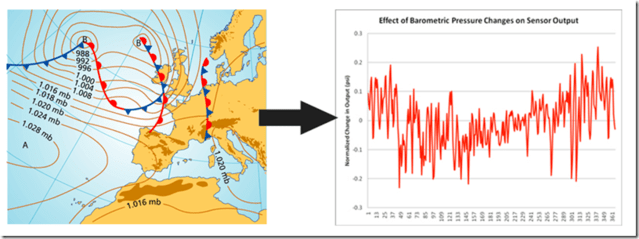1.Which is the pressure formula? How do you convert pressure to force? |
|
This article shows the difference between the different types of pressure.
Pressure is one force per unit area and can be expressed in units such as pascal, bar, atmospheres, kilograms per
square centimeter, and psi.
Any good instrumentation technician needs to know the difference between the basic types of pressure measurement.
Pressure, in addition to being one of the most widely used variables in process control, is undoubtedly the most
important.
Pressure is a measure in itself and because other important variables such as flow, density and level can be deduced
from it.
Pressure is a measure that represents about 25% of the sales volume of the global market for measuring instruments.
Pressure formula may be expressed as a force per unit area or in terms of liquid column height.
The expression pressure = force / area shows that o tremendous force will exist for a nominal pressure,
provided the area is large, also a large pressure is produced by o small force when the effective area is small.
 Formula for Pressure
Formula for Pressure
Pressure can have one of two reference points: atmospheric pressure or absolute zero pressure. A pressure measurement
using atmospheric pressure as the reference point is known as gage pressure (bar g).
The pressure measurement referencing absolute zero pressure is known as absolute pressure (bar a).
 Types of Pressure Measurements
Types of Pressure Measurements
The pressure measurement can only be performed by comparing a known or reference pressure measurement and another
unknown pressure measurement that we wish to measure.
The following video will show an small introduction to pressure measurement.
 Measuring Principle Pressure
Measuring Principle Pressure
|
2. Atmospheric Pressure |
2.1 What is Atmospheric Pressure? |
- This is the pressure experienced on the earths surface where each square meter supports a column of air, giving a
pressure of 1013 mb.
The pressure reduces progressively towards the top of the column. This is illustrated by the difference between
pressure at sea level
and that at the top of a high mountain. It varies due to changes in temperature and climatic conditions.
- It is caused by the weight of the atmosphere. It depends on the climatic changes,
the reference pressure is the pressure at sea level which is equal to 1013 mbar or 760 mmHg.
- It is the most important pressure measure for the life of humans on earth.
It is identified by the abbreviations amb (amb = environment, surrounding).
- This pressure is produced by the weight of the air gas contained in the atmosphere surrounding the earth.
The size of this gas column ranges from the earths surface to an altitude of about 300 kilometers.
As we approach the distance of 300 km from the earths surface the atmospheric pressure decreases steadily until
practically equals zero (complete vacuum).
 Typical Atmospheric Pressure Variations
Typical Atmospheric Pressure Variations
- Due to climatic changes the atmospheric pressure of air undergoes variations, these variations are not very
significant,
in terms of pressure, and can be observed in the thousands of daily meteorological reports.
- At sea level, atmospheric pressure has an average value of 29.90 inches of Mercury or 760 mm Hg absolute (mercury
column), according to the Torricelli experiment.
The fluctuation of the atmospheric pressure due to the climatic changes can be around 5%.
The value of this pressure decreases as altitude increases.
- It can have a variation of ± 200 mbar depending on the height above the sea level,
and variation of ± 30 mbar per day depending on weather conditions.
 Chips Bag deformed by the pressure of air
Chips Bag deformed by the pressure of air
- Physical Properties of U.S Standard Atmosphere:
 Physical Properties of U.S Standard Atmosphere
Physical Properties of U.S Standard Atmosphere
Basic Assumptions:
Air is a clean, dry, perfect gas mixture; Specific heat ratio = 1.40; Molecular weight to 86 km = 28.9644
Principal sea-level constituents: N278.084%, O220.9476%, Ar0.934%, CO20.0314%, Ne0.001818%, He0.000524%, CH40.0002%
|
3. Absolute Pressure |
3.1 What is Absolute Pressure? |
- Absolute zero pressure is the ultimate reference point. This pressure is the pressure of empty space in the
cosmos.
- The absolute pressure definition measurement is based on the absolute zero pressure measurement as a reference
measure.
- It can be recognized by the subscript abs. Another way to define it is add to the atmospheric pressure the value
of pressure gauge
taken from the instrumentation. The absolute pressure measurement is indicated by the letter a or the abbreviation
abs
in order to distinguish it from the other types of pressure (relative pressure, differential pressure).
 The absolute pressure formula measurement is indicated by the letter a or the
abbreviation abs
The absolute pressure formula measurement is indicated by the letter a or the
abbreviation abs
|
3.2 How to find Absolute Pressure? |
|
3.3 Absolut Pressure Applications |
- Applications where high accuracy of vacuum measurement is required.
- Control applications where low pressure or vacuum is needed. In these applications it is necessary to have a measure
that takes into account the influence of atmospheric pressure.
- Measurement of low pressure in the distillation vacuum columns.
- Vacuum Reactors
- Leakage control in tanks and circuits
|
4. Gauge Pressure |
4.1 What is Gauge Pressure? |
|
4.2 Gauge Pressure Applications |
- Measurement of level in atmospheric tanks.
- Measurement of Pressure in pipes and tanks where working pressure is greater than the variations due to
atmospheric pressure.
The change in atmospheric pressure have no impact in the final pressure measurement.
- Measurement of pressure in air conditioning and air control and corrosive gases. For example in lab rooms.
Watch the following video from VEGA which explains the
difference between
Absolute Pressure and Gauge Pressure:
 Absolute Pressure vs Gauge Pressure
Absolute Pressure vs Gauge Pressure
|
5. Differential Pressure |
5.1 What is Differential Pressure? |
- It is defined as the difference between two pressures, also known as dP, loss, etc ...
- It is also defined as the difference between a certain pressure value and another used as a reference. In a sense,
absolute pressure could be considered as a differential pressure that takes absolute vacuum as a reference and
relative pressure as another type of differential pressure that takes atmospheric pressure as a reference.
- The differential pressure measurement may be a little more complex than the relative pressure measurement
or the absolute pressure definition measurement, although it is simply used to measure two different media.
 Differential Pressure Formula Definition
Differential Pressure Formula Definition
- It does not take into account the effect of atmospheric pressure.
 Differential Pressure
Differential Pressure
Although most relative pressure measurements are technically identical to a differential pressure measurement
instrument,
the differential pressure measurement instrument is not referenced to the atmospheric pressure measurement,
but we use this measuring chamber to connect it to a medium that we want to measure.
In this way, by numerical difference between the two pressure measurements of the 2 chambers we obtain the
differential pressure measurement.
- The differential pressure measurement is used to check the drop or loss of pressure from one side of an object to
the other side.
- Vacuum pressure: The term vacuum is used if the pressure is below atmospheric pressure.
|
5.2 Differential Pressure Applications |
- Level measurement in tanks and vessels
- Density measurement
- Flow Measurement
- Interface Level Measurement
- Flooding Monitoring in Distillation Column
- Filter monitoring
- Monitoring pumps and valves
- Fire Monitoring Systems Sprinklers
- Processes where is needed a supply pressure monitoring
|
6. Pressure Measurement Facts |
6.1 When to measure absolute and gauge pressure? |
This is not always straightforward but generally if you want to measure or control a pressure that is influenced by
changes in atmospheric pressure,
e.g. the level of liquid in an open tank or the output pressure of an air compressor;
you would use a vented gauge pressure transmitter since you are interested in the pressure reading minus the
atmospheric pressure component.
If you want to measure pressures that are not influenced by changes in atmospheric pressure, e.g. leak testing a
completely sealed non-flexible container,
you would use an absolute pressure sensor. If a gauge pressure sensor was used instead to measure the container
pressure,
and the barometric pressure changed, then the sensors reading would change, despite the fact that the pressure in the
container remains the same.
The use of gauge pressure is extremely important in industry, since it is a measure of the stress within a vessel and
the tendency of fluids to leak out.
|
6.2 What instrument is used to measure air pressure? |
The Barometer is the instrument used to measure air pressure.
 Pressure Measurement Facts
Pressure Measurement Facts
|